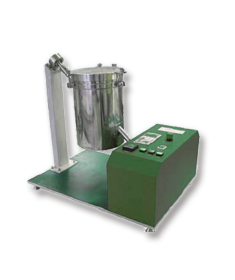What is the difference between dry cleaning and washing?
With the arrival of winter, people tend to switch to designer clothing made of thicker fabrics and finer workmanship, and these winter clothes often require dry cleaning. However, most people aren't clear about which items can be dry-cleaned, which items must be dry-cleaned, and which items cannot. Furthermore, the quality of service at many dry cleaners varies widely, leading to a significant increase in laundry complaints. Therefore, mastering some winter clothing washing knowledge can help prevent problems from being "too late."
For example, all household items, from suits and coats to blankets, pillowcases, and pillowcases, can be dry-cleaned. Leather jackets, leather gloves, leather bags, and fur coats can also be dry-cleaned. However, coated synthetic down jackets and items with heavy, loosely attached beads should not be dry-cleaned. Furthermore, items with linings and shoulder pads, as well as delicate, thin, and fragile items like silk ties, shirts, and cashmere products, and items prone to fading and shrinking, such as linen, must be dry-cleaned. Precious and exquisite wool garments are primarily dry-cleaned. Washing with water can easily damage the texture and feel of the fabric, and may also cause the style to change or cause discoloration. Silk garments with soft, brocade, openwork, or embroidered patterns must be dry-cleaned. Because silk is thin and soft and has poor abrasion resistance, it is prone to pilling and even fuzzing when washed in a high-speed washing machine. The satin loses its luster, and openwork or embroidered patterns shrink and deform severely. Furthermore, blended and synthetic fiber suits and jackets are best dry-cleaned. Dry cleaning prevents deformation of wool and linen interlinings, as well as bubbling and debonding of adhesive interlinings. Synthetic fiber fabrics such as polyester, nylon, acrylic, vinylon, chloroprene, and polypropylene generally have excellent physical and mechanical properties, making them suitable for washing in a washing machine. The Dry Cleaning and Washing Cylinder is a key instrument in textile testing and industrial cleaning. It is primarily used to simulate dry cleaning or water washing processes to evaluate fabric performance under specific cleaning conditions, such as color fastness and abrasion resistance.
Dry Cleaning and Washing Cylinder: Dual dry cleaning and water washing modes meet diverse testing needs
Dry Cleaning Mode: Suitable for evaluating fabric resistance to dry cleaning solvents such as tetrachloroethylene and hydrocarbon solvents. It simulates real-world dry cleaning scenarios and tests fabric color fastness, dimensional stability, and residual solvents during the dry cleaning process.
Water Washing Mode: Supports warm, cold, and hot water washing, and can test fabric shrinkage, pilling, and detergent compatibility at different temperatures.
Dual Mode Switching: Quickly switch between dry cleaning and water washing modes via the control system, eliminating the need for additional equipment and reducing testing costs and space requirements.
Dry cleaning and water washing each offer their own benefits
So, for garments that can be both dry cleaned and water washed, which method is better? Dry cleaning isn't necessarily better than water washing. Water washing is more thorough than dry cleaning because water can more easily penetrate the fabric. Dirty clothes often contain a large amount of water-soluble soil, which water washing removes more thoroughly. However, water washing can have significant side effects on clothing. It can easily cause clothes to shrink and deform, a phenomenon rarely seen with dry cleaning, as clothes are subjected to high-temperature shaping after dry cleaning. Therefore, dry cleaning's greatest advantage is its improved shape retention. Furthermore, water washing is only suitable for water-soluble stains, such as sweat and milk. For these, water washing is effective. However, for oily stains like grease, asphalt, and resin, water washing is ineffective, and only dry cleaning can provide a clean finish. Therefore, light-colored cotton garments are brighter when washed with water than when dry-cleaned. Pants, which are most susceptible to clay stains, are cleaner when washed with water. Synthetic fiber garments without shoulder pads are better washed with water.
Down jackets are best washed in water
With frequent winter cold snaps, a warm and fluffy down jacket is a surefire way to survive the cold. However, washing and maintaining it can be a headache. Improper washing methods can cause the down to become stiff and hardened, losing its warmth. It's also important to note that dry cleaning can easily damage the protein content of down and cause the fabric to age. Therefore, down jackets should only be washed in water, never dry-cleaned.
Down jackets that aren't particularly large can generally be washed at home. For down jackets with removable liners, separate the outer shell from the liner before washing. Down jackets are often made of nylon silk or polyester-cotton fabrics, which have a tighter structure and better seal in the down. Dirt often clings to the surface and prevents it from entering the interior, making it difficult to wet during washing. Pre-soaking in clean water is essential. Be careful not to overheat the water to prevent wrinkles or discoloration, and wash until the down is thoroughly soaked.
Unload the garment and lay it flat on a washboard. Brush key areas with a soft-bristle brush. Then, use a strong detergent and rinse thoroughly. For optimal cleaning results, add a diluted professional fabric conditioner, such as the commonly available Gold Spin fabric conditioner, to the final wash cycle. Soak for three minutes. This will help the down fibers stretch, making them fluffier, lighter, softer, and less prone to deformation. After absorbing moisture with a towel, shake and flatten the down jacket, then hang it to dry in the shade. The most important step is to pound it with your hands or a rattan stick after it's dried to restore the down to its original loft.
Multiple Washing Methods for Mixed Clothes
Many of you may notice that many of the pieces in your wardrobe are trending in the mixed-and-match fashion, with either silk inlays on collars and cuffs or hard embellishments like sequins or beaded embroidery on the fronts. Many men's suits also feature small pieces of leather at the shoulders or elbows. These require practical experience and proper care. Clothing made of inlaid silk fabrics should not be washed or tumble-dried in a washing machine, as they are susceptible to twisting. Avoid vigorous rubbing. Instead, soak it in a neutral soapy solution or synthetic detergent at approximately 35°C. After thoroughly soaking, turn it over several times by hand. Once the dirt is removed, rinse it with clean water and hang it on a hanger to air-dry. Clothing embellished with hard embellishments such as sequins or beadwork should be washed inside out. If the care label indicates machine washability, place it in a designated laundry bag beforehand. When washing mixed leather and knitwear, use the cleaning method appropriate for knitwear. Wash with a neutral detergent and wipe the leather with a dry cloth while it's still wet.
For woolen clothing, which is common in winter, if you don't want to see a novice ruin a garment, opt for dry cleaning. This is because woolen garments are often stitched with needles, and the interlining is often made of cotton or linen. The tumbling in the washing tub causes uneven shrinkage and deformation after absorbing water, which not only affects the appearance but also reduces durability. Furthermore, there is one type of clothing that should never be machine washed: work clothes stained with gasoline. This is because gasoline is flammable and explosive. Not only will the spread of oil stains contaminate and corrode the washing machine, but gasoline in clothing could also cause an explosion if the washing machine ignites while it is running.
Even washing machines require selection
● Twin-tub washing machines
Suitable for: Sheets, quilt covers, curtains, and everyday clothes year-round.
Despite adding a spin-dry function as a second-generation, improved washing machine, twin-tub washing machines still offer limited labor. After washing, clothes must be manually spun dry, often resulting in incomplete drying and frequent dryer malfunctions. Furthermore, limited space in the washing tub makes it difficult to wash heavy autumn and winter clothing. Furthermore, the time-consuming, energy-intensive, noisy, and water-poor design of these machines compel many housewives to switch to other options.
● Fully automatic washing machines
Suitable for: All clothing except those requiring specialized washing.
Since fully automatic washing machines still primarily use a pulsator-type drum, clothes are prone to tangling after spinning. Wool and silk fabrics should not be washed in these machines. Furthermore, these machines are more abrasive than other models and offer poor cleaning performance.
● Front-loading washing machines
Suitable for: Wool, cashmere, silk, and pure wool fabrics.
Front-loading washing machines offer two major advantages: first, they save water. Pulsator washing machines require a large amount of water to move the clothes; front-loading washing machines, on the other hand, use less water because the clothes fall and are beaten by water. Furthermore, front-loading washing machines wash clothes much like the way people in the South use a mallet, preventing tangling and significantly reducing wear and tear on clothes compared to pulsator washing machines.
The Dry Cleaning and Washing Cylinder, a drum-type device, boasts a core advantage in its highly integrated functionality. It transcends the limitations of traditional single-mode cleaning equipment. By flexibly switching between dry and water cleaning modes, it can comprehensively address diverse testing needs for everything from delicate fabrics to standard fabrics. In dry cleaning mode, the device accurately simulates the cleaning environment of specialized solvents such as tetrachloroethylene and hydrocarbon solvents, effectively evaluating the colorfastness, dimensional stability, and solvent residue of high-end fabrics like wool and silk during the dry cleaning process, providing critical quality control information for garment manufacturers. In water washing mode, the device supports multiple temperature settings for warm, cold, and hot water, enabling in-depth testing of shrinkage, pilling, and detergent compatibility for common fabrics like cotton and linen under different washing conditions. This enables textile laboratories to conduct comprehensive performance verification from R&D to production. This seamless dual-mode design not only eliminates the cost of purchasing separate dedicated dry cleaning or water washing equipment, but also enables accurate simulation of multiple cleaning scenarios with a single machine, significantly improving testing efficiency and space utilization. It is particularly suitable for laboratories and production environments that frequently switch between testing types.


